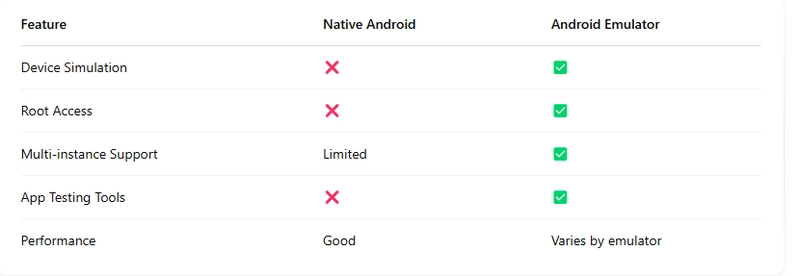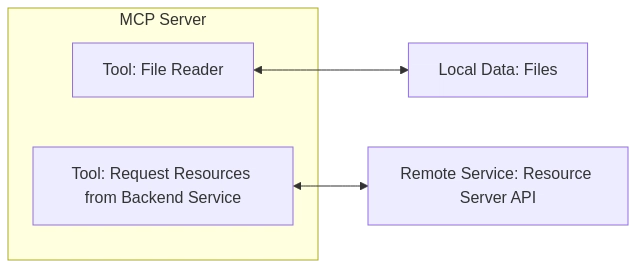A Guide to Android Emulators for Chromebook
As Chromebooks continue to gain popularity for their simplicity, affordability, and speed, more users are looking to get the most out of these versatile machines. One increasingly common use case is running Android apps and games directly on Chrome OS, especially with improved support for Linux and Android development tools. While Chromebooks already support Android apps natively, using an Android Emulator gives you much more control, customization, and flexibility. This guide walks you through everything you need to know about choosing and using an emulator for Chromebook — whether you're a developer testing an app or a gamer who wants to enjoy Android games on a larger screen. What Is an Android Emulator? An Android Emulator is a virtual environment that mimics an Android device on a different operating system. Essentially, it allows you to run the Android OS within another platform—like Linux, Windows, or Chrome OS. This means you can access Android apps, games, and development tools on your Chromebook as if it were a native Android device. Most emulators are built for developers, but many now also cater to general users who want enhanced Android experiences on their laptops or desktops. Why Use an Emulator for Chromebook? Chromebooks already support Android apps via the Google Play Store, so why bother using an emulator? Here are several compelling reasons: Device Simulation: Test your app across different screen sizes, resolutions, and OS versions. Root Access: Many emulators allow root-level customization, which is not possible with native Android support. Gaming Optimization: Play mobile games with better graphics, performance, and keyboard/mouse controls. Multi-instance Capability: Run multiple Android sessions or apps simultaneously. Advanced Testing Tools: Emulators often include features like GPS spoofing, network simulation, and more. Whether you're a developer or a power user, choosing the right emulator for Chromebook can drastically improve your workflow and entertainment options. System Requirements for Running Android Emulators Before installing any Android Emulator, ensure your Chromebook meets some basic system requirements: Intel or AMD Processor: Most emulators require an x86 architecture; ARM-based Chromebooks may not be compatible. Minimum 4GB RAM: 8GB or more is recommended for smooth performance. Linux (Crostini) Enabled: Most emulators require Linux support, which is available on most newer Chromebooks. Free Disk Space: Emulators can take up several gigabytes depending on the configuration. If your Chromebook meets these requirements, you're ready to explore the best emulator options available. Best Emulator for Chromebook: Top Recommendations Here are some of the most reliable and functional Android emulators compatible with Chromebooks. 1. Android Studio Emulator The Android Emulator bundled with Android Studio is ideal for developers. It offers robust tools for debugging, device simulation, and app testing. Pros: Official emulator backed by Google. Highly customizable. Supports multiple virtual devices and Android versions. Cons: Heavy on system resources. Requires Linux setup and technical knowledge. To install, enable the Linux development environment and download Android Studio. Use the AVD Manager to configure virtual devices. This is the best emulator for Chromebook if you're into serious Android development. 2. Waydroid (Wayland Android) Waydroid is a container-based solution that runs a complete Android system alongside your Linux OS on Chrome OS. It delivers near-native performance. Pros: Lightweight and fast. Full-featured Android environment. Integrates well with Linux apps. Cons: Setup can be complex for beginners. May require custom kernel tweaks on some devices. Waydroid is a fantastic emulator for Chromebook users who are comfortable using the command line and want a near-native Android experience. 3. Bluestacks X (Cloud-based) Bluestacks is one of the most popular emulators for Android on Windows, and now with Bluestacks X, you can access cloud-based Android games right from your browser. Pros: No installation required. Cloud-powered – works even on low-spec Chromebooks. Optimized for gaming. Cons: Limited to supported games. Requires a strong internet connection. Bluestacks X is a great emulator for Chromebook users who are mainly interested in gaming and want a quick, hassle-free setup. 4. Anbox (Android in a Box) Anbox runs Android as a container in your Linux environment, offering a fast and efficient Android experience without full virtualization. Pros: Open-source. Lightweight and fast. Good for basic app usage. Cons: Development is not very active. Compatibility issues with newer Android apps. While not the most feature-rich, Anbox is a simple emulator for Chromebook that works well for basic tasks and older apps. Emulator vs Native Android: Wh

As Chromebooks continue to gain popularity for their simplicity, affordability, and speed, more users are looking to get the most out of these versatile machines. One increasingly common use case is running Android apps and games directly on Chrome OS, especially with improved support for Linux and Android development tools. While Chromebooks already support Android apps natively, using an Android Emulator gives you much more control, customization, and flexibility.
This guide walks you through everything you need to know about choosing and using an emulator for Chromebook — whether you're a developer testing an app or a gamer who wants to enjoy Android games on a larger screen.
What Is an Android Emulator?
An Android Emulator is a virtual environment that mimics an Android device on a different operating system. Essentially, it allows you to run the Android OS within another platform—like Linux, Windows, or Chrome OS. This means you can access Android apps, games, and development tools on your Chromebook as if it were a native Android device.
Most emulators are built for developers, but many now also cater to general users who want enhanced Android experiences on their laptops or desktops.
Why Use an Emulator for Chromebook?
Chromebooks already support Android apps via the Google Play Store, so why bother using an emulator? Here are several compelling reasons:
- Device Simulation: Test your app across different screen sizes, resolutions, and OS versions.
- Root Access: Many emulators allow root-level customization, which is not possible with native Android support.
- Gaming Optimization: Play mobile games with better graphics, performance, and keyboard/mouse controls.
- Multi-instance Capability: Run multiple Android sessions or apps simultaneously.
- Advanced Testing Tools: Emulators often include features like GPS spoofing, network simulation, and more.
Whether you're a developer or a power user, choosing the right emulator for Chromebook can drastically improve your workflow and entertainment options.
System Requirements for Running Android Emulators
Before installing any Android Emulator, ensure your Chromebook meets some basic system requirements:
- Intel or AMD Processor: Most emulators require an x86 architecture; ARM-based Chromebooks may not be compatible.
- Minimum 4GB RAM: 8GB or more is recommended for smooth performance.
- Linux (Crostini) Enabled: Most emulators require Linux support, which is available on most newer Chromebooks.
- Free Disk Space: Emulators can take up several gigabytes depending on the configuration.
If your Chromebook meets these requirements, you're ready to explore the best emulator options available.
Best Emulator for Chromebook: Top Recommendations
Here are some of the most reliable and functional Android emulators compatible with Chromebooks.
1. Android Studio Emulator
The Android Emulator bundled with Android Studio is ideal for developers. It offers robust tools for debugging, device simulation, and app testing.
Pros:
- Official emulator backed by Google.
- Highly customizable.
- Supports multiple virtual devices and Android versions.
Cons:
- Heavy on system resources.
- Requires Linux setup and technical knowledge.
To install, enable the Linux development environment and download Android Studio. Use the AVD Manager to configure virtual devices.
This is the best emulator for Chromebook if you're into serious Android development.
2. Waydroid (Wayland Android)
Waydroid is a container-based solution that runs a complete Android system alongside your Linux OS on Chrome OS. It delivers near-native performance.
Pros:
- Lightweight and fast.
- Full-featured Android environment.
- Integrates well with Linux apps.
Cons:
- Setup can be complex for beginners.
- May require custom kernel tweaks on some devices.
Waydroid is a fantastic emulator for Chromebook users who are comfortable using the command line and want a near-native Android experience.
3. Bluestacks X (Cloud-based)
Bluestacks is one of the most popular emulators for Android on Windows, and now with Bluestacks X, you can access cloud-based Android games right from your browser.
Pros:
- No installation required.
- Cloud-powered – works even on low-spec Chromebooks.
- Optimized for gaming.
Cons:
- Limited to supported games.
- Requires a strong internet connection.
Bluestacks X is a great emulator for Chromebook users who are mainly interested in gaming and want a quick, hassle-free setup.
4. Anbox (Android in a Box)
Anbox runs Android as a container in your Linux environment, offering a fast and efficient Android experience without full virtualization.
Pros:
- Open-source.
- Lightweight and fast.
- Good for basic app usage.
Cons:
- Development is not very active.
- Compatibility issues with newer Android apps.
While not the most feature-rich, Anbox is a simple emulator for Chromebook that works well for basic tasks and older apps.
Emulator vs Native Android: What’s the Difference?
Although Chromebooks support native Android apps, using an Android Emulator has clear benefits depending on your needs:
If you just want to use a few Android apps, native support is fine. But if you're a power user or developer, an emulator for Chromebook opens up many more possibilities.
How to Choose the Right Emulator for Chromebook
Here’s how to pick the best emulator based on your needs:
For Development: Go with Android Studio’s built-in emulator.
- For Gaming: Use Bluestacks X for easy cloud-based gaming.
- For Full Android Experience: Waydroid offers a seamless, near-native Android setup.
- For Lightweight Use: Anbox is simple and effective.
Consider your Chromebook's specs, your comfort with Linux, and your primary use case when choosing the right emulator for Chromebook.
Final Tips for Better Emulator Performance
To get the most out of your Android Emulator on Chrome OS:
- Allocate more memory and CPU in settings if possible.
- Close unused tabs and apps to free up system resources.
- Use SSD storage for faster performance.
- Regularly update your Linux environment and packages.
- For Waydroid and Anbox, follow community tutorials for smooth installation.
Conclusion
Chromebooks are far more powerful than people give them credit for, especially when paired with a capable Android Emulator. Whether you're testing an app, running multiple virtual devices, or simply enjoying mobile games with keyboard support, an emulator for Chromebook can dramatically enhance your experience.
From developer-focused tools like Android Studio to lightweight options like Anbox and innovative cloud-based solutions like Bluestacks X, there’s a solution for everyone. All it takes is the right setup and a bit of exploration to unlock your Chromebook’s full Android potential.










































































































































































![[The AI Show Episode 144]: ChatGPT’s New Memory, Shopify CEO’s Leaked “AI First” Memo, Google Cloud Next Releases, o3 and o4-mini Coming Soon & Llama 4’s Rocky Launch](https://www.marketingaiinstitute.com/hubfs/ep%20144%20cover.png)


















































































































![[DEALS] The All-in-One Microsoft Office Pro 2019 for Windows: Lifetime License + Windows 11 Pro Bundle (89% off) & Other Deals Up To 98% Off](https://www.javacodegeeks.com/wp-content/uploads/2012/12/jcg-logo.jpg)





































![Is this too much for a modular monolith system? [closed]](https://i.sstatic.net/pYL1nsfg.png)






















































































































_Andreas_Prott_Alamy.jpg?width=1280&auto=webp&quality=80&disable=upscale#)
































































































![What features do you get with Gemini Advanced? [April 2025]](https://i0.wp.com/9to5google.com/wp-content/uploads/sites/4/2024/02/gemini-advanced-cover.jpg?resize=1200%2C628&quality=82&strip=all&ssl=1)













![Apple Shares Official Trailer for 'Long Way Home' Starring Ewan McGregor and Charley Boorman [Video]](https://www.iclarified.com/images/news/97069/97069/97069-640.jpg)
![Apple Watch Series 10 Back On Sale for $299! [Lowest Price Ever]](https://www.iclarified.com/images/news/96657/96657/96657-640.jpg)
![EU Postpones Apple App Store Fines Amid Tariff Negotiations [Report]](https://www.iclarified.com/images/news/97068/97068/97068-640.jpg)
![Apple Slips to Fifth in China's Smartphone Market with 9% Decline [Report]](https://www.iclarified.com/images/news/97065/97065/97065-640.jpg)





































































































































